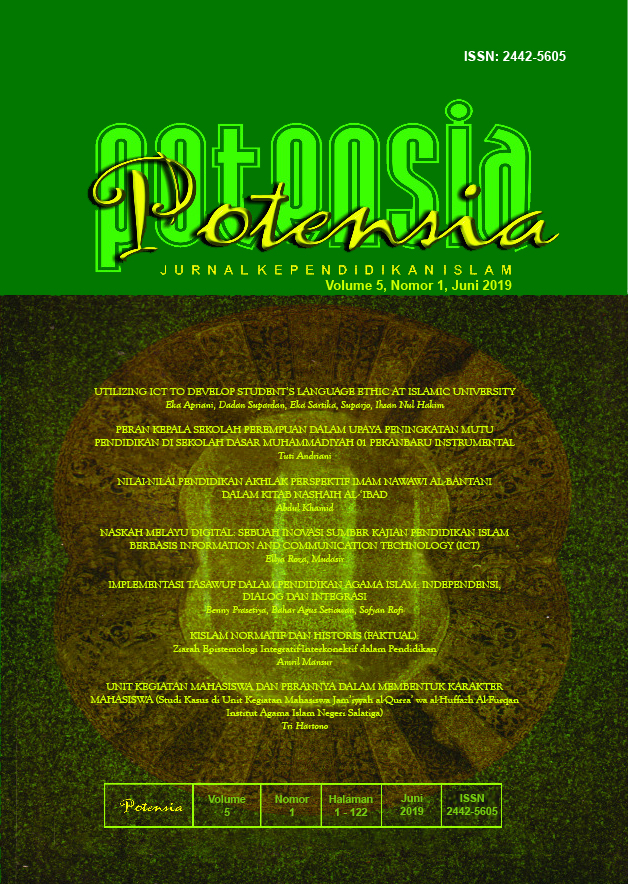NASKAH MELAYU DIGITAL: SEBUAH INOVASI SUMBER KAJIAN PENDIDIKAN ISLAM BERBASIS INFORMATION AND COMMUNICATION TECHNOLOGY (ICT)
DOI:
https://doi.org/10.24014/potensia.v5i1.6473Keywords:
ICT-based, Islamic education, digital Malay manuscriptsAbstract
This paper aims to find out the digital Malay manuscript as a source of studies in the field of Islamic education. Malay manuscript is one of the nation's documents written manually using Arabic-Malay characters and in Malay. This means that the Malay manuscript is a stroke of the local genius of the nation and is an intellectual icon of the people of his day. But along with advances in technology, the Malay manuscript also experienced development through this technology by means of digitalization. In terms of methodology, this paper is a study of historical and cultural heritage involving Malay manuscript, so this study uses descriptive qualitative methods that are linked to analysis and interpretation and finally focuses on content analysis. At the end of the study it was found that in addition to the Quran and Hadith which are the sources of Islamic education studies, it turns out that the digital Malay manuscript can be used as the next source, because the Malay manuscript is a legacy of cultural heritage that is loaded with noble values of life such as social, political, religious, educational, culture, economics, language, literature and so on. Therefore, digital Malay manuscript is an ICT-based innovation that can be used as a source of study of Islamic education. Digital Malay manuscripts are very easy to obtain because in various places where Malay manuscripts have been digitalized, scientists can use them. In addition, digital Malay manuscripts can be accessed through the internet with various sites.
Downloads
Published
How to Cite
Issue
Section
License
POTENSIA: Jurnal Kependidikan Islam operates an Open Access policy under a Creative Commons Attribution 4.0 International License. Authors who publish with this journal agree to the following terms:
- Authors retain copyright and grant the journal right of first publication with the work simultaneously licensed under a Creative Commons Attribution 4.0 International License that allows others to share the work with an acknowledgement of the work's authorship and initial publication in this journal.
- Authors are able to enter into separate, additional contractual arrangements for the non-exclusive distribution of the journal's published version of the work (e.g., post it to an institutional repository or publish it in a book), with an acknowledgement of its initial publication in this journal.
- Authors are permitted and encouraged to post their work online (e.g., in institutional repositories or on their website) prior to and during the submission process, as it can lead to productive exchanges, as well as earlier and greater citation of published work.

